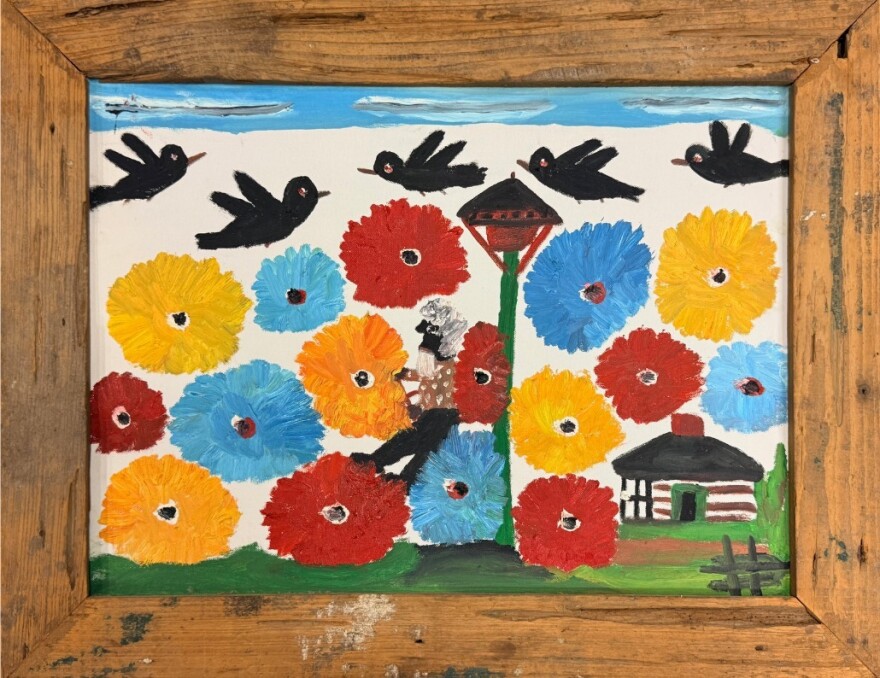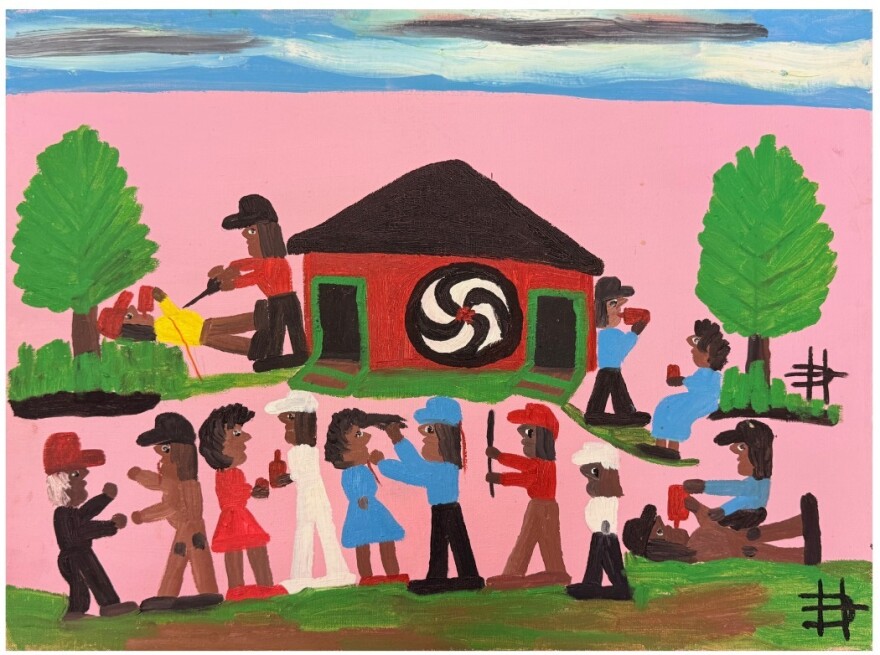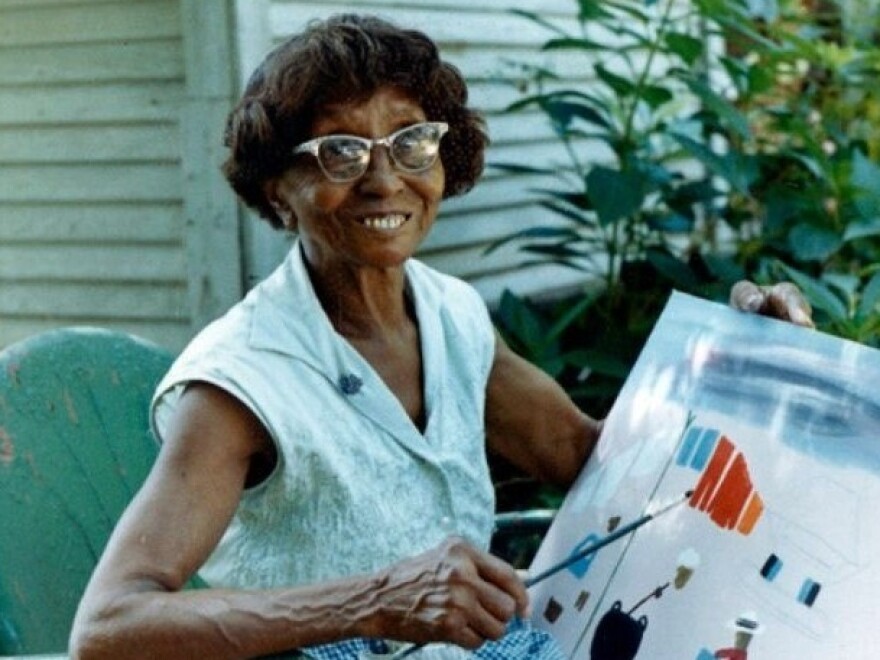The African American Museum in Dallas will open a new exhibition next week celebrating the work of self-taught Louisiana painter Clementine Hunter, who depicted worship, work and community on a former plantation in her work.
“Sunday Call to Church: The Art of Clementine Hunter” brings together 22 paintings collected by Bank of Texas chairman Norman Bagwell and four of the museum’s own holdings.
Hunter, born in 1887 on a Louisiana plantation, didn’t begin painting until she was about 50. She worked most of her life as a field laborer and house worker at Melrose Plantation, where she started out quilting and doing other crafts before an artist visiting the property gave her leftover paint and brushes. From there, Hunter began working on whatever surfaces she could find.

Museum associate curator Lakeem Wilson said Hunter painted from memory rather than life, creating landscapes of the plantation as she experienced it.
“Naive is the best way to explain it,” he said. “It's not super detailed and drawn out, but there's an intelligence behind it because you can kind of put yourself in the settings of the works … you can see the skies and the grounds and things that's going on at the time as she's painting it.”
Hunter’s paintings frequently reflect on her religious life and the role of the local church in the plantation community. Wilson said that spirituality shows up in scenes of baptisms and funerals as well as in the angels she often included in her paintings.
“She strongly believed that she wanted to go to heaven and that she needed to live right in order to do that,” he said. “She really thought that going to church would save people's souls and that's important to her.”

Wilson said he was drawn to curate the exhibition in part out of respect for the wisdom embodied by artists of Hunter’s generation.
“I just think the wisdom from our elders is something that us as the younger generation need to be soaking in and gathering,” he said.
The Hunter exhibition is a chance to see a world rarely represented in mainstream art history, Wilson said: The everyday rhythms, resilience and faith of Black communities in the rural South.
Details:
Dec. 5 through March 6 at the African American Museum Dallas, 3536 Grand Ave. Dallas. Admission is free
Arts Access is an arts journalism collaboration powered by The Dallas Morning News and KERA.
This community-funded journalism initiative is funded by the Better Together Fund, Carol & Don Glendenning, City of Dallas OAC, The University of Texas at Dallas, Communities Foundation of Texas, The Dallas Foundation, Eugene McDermott Foundation, James & Gayle Halperin Foundation, Jennifer & Peter Altabef and The Meadows Foundation. The News and KERA retain full editorial control of Arts Access’ journalism.





